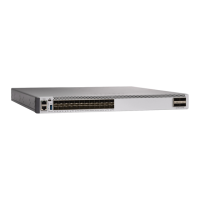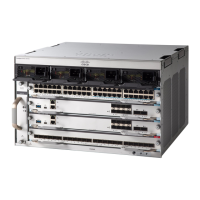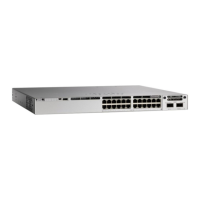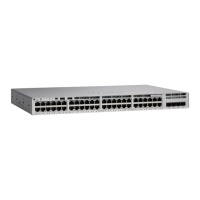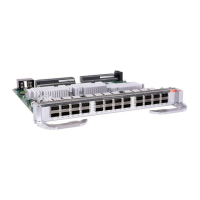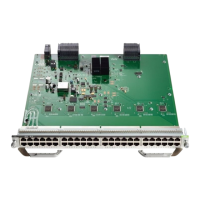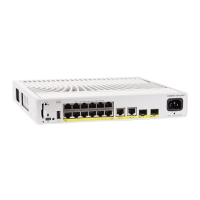The figure below shows what happens when a failure occurs in the network (1). The BFD neighbor session
with the OSPF neighbor router is torn down (2). BFD notifies the local OSPF process that the BFD neighbor
is no longer reachable (3). The local OSPF process tears down the OSPF neighbor relationship (4). If an
alternative path is available, the routers will immediately start converging on it.
A routing protocol needs to register with BFD for every neighbor it acquires. Once a neighbor is registered,
BFD initiates a session with the neighbor if a session does not already exist.
OSPF registers with BFD when:
•
A neighbor finite state machine (FSM) transitions to full state.
•
Both OSPF BFD and BFD are enabled.
On broadcast interfaces, OSPF establishes a BFD session only with the designated router (DR) and backup
designated router (BDR), but not between any two routers in DROTHER state.
BFD Detection of Failures
Once a BFD session has been established and timer negations are complete, BFD peers send BFD control
packets that act in the same manner as an IGP hello protocol to detect liveliness, except at a more accelerated
rate. The following information should be noted:
•
BFD is a forwarding path failure detection protocol. BFD detects a failure, but the routing protocol must
take action to bypass a failed peer.
•
Starting Cisco IOS XE Denali 16.3.1, Cisco devices will support BFD version 0, where devices will use
one BFD session for multiple client protocols in the implementation. For example, if a network is running
OSPF and EIGRP across the same link to the same peer, only one BFD session will be established, and
BFD will share session information with both routing protocols.
BFD Version Interoperability
All BFD sessions come up as Version 1 by default and will be interoperable with Version 0. The system
automatically performs BFD version detection, and BFD sessions between neighbors will run in the highest
common BFD version between neighbors. For example, if one BFD neighbor is running BFD Version 0 and
the other BFD neighbor is running Version 1, the session will run BFD Version 0. The output from the show
bfd neighbors [details] command will verify which BFD version a BFD neighbor is running.
See the Example Configuring BFD in an EIGRP Network with Echo Mode Enabled by Default for an example
of BFD version detection.
Routing Configuration Guide, Cisco IOS XE Everest 16.6.x (Catalyst 9500 Switches)
3
Configuring Bidirectional Forwarding Detection
Information About Bidirectional Forwarding Detection

